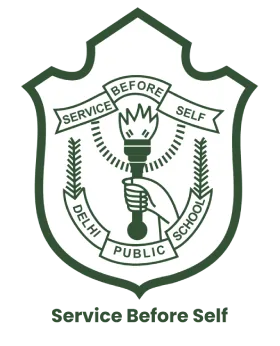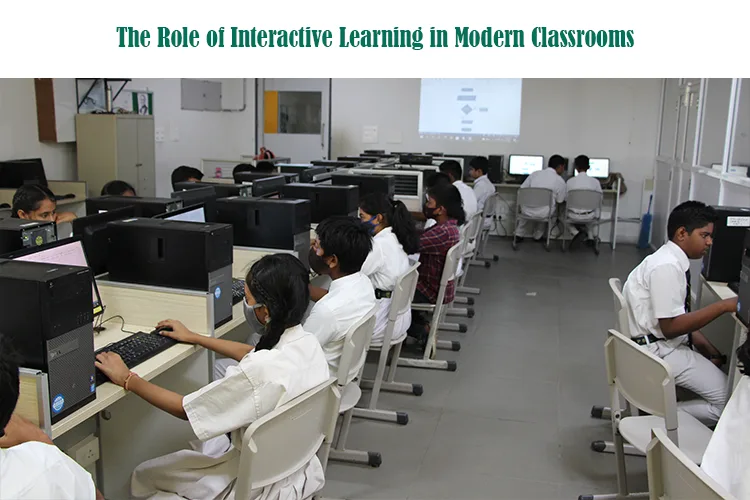If you ever felt that passive listening to instructions in the classroom isn’t enough, well, interactive learning is for you. It’s a method of learning where you actively participate rather than just sit there. Consider practical exercises, teamwork, and the use of creative resources like technology. When a student is actually doing things rather than just passively taking in knowledge, they’ll grasp things more fully. Also, helps in retaining the concepts for longer. Keep reading to learn more about interactive learning.
Why interactive learning matters today
Given how rapidly the educational landscape has changed in recent years, traditional teaching that favors rote memory is highly ineffective now. Interactive learning is the new norm considering how it educates pupils for the future. Interactive learning is the result of fast paced technological improvements and the use of artificial intelligence.
Boosts a student’s interest and gets them involved.
Well, interactive learning captures interest and makes learning more enjoyable. Group discussions, entertaining simulations, and videos are all considerably better than reading a book. Students participate more when the learning environment includes things like exchanging ideas and experimenting with new technology. This helps kids focus, get more engaged with what they’re studying, and makes learning more fun.
Helps with memory for better and longer.
The goal of interactive learning approaches is to improve knowledge retention and comprehension. Children are better equipped to understand and retain complex concepts through hands-on activities, experiments, and real-world connections. Students gain a deeper understanding of the material as they bridge the gap between theory and practice by actively applying what they have learned.
Makes students think harder and solve problems.
By encouraging students to consider many viewpoints and pose inquiries, interactive learning develops critical thinking skills. Working on real-world issues and difficulties teaches students how to look at data and develop solutions. This method of education improves your capacity to solve problems and prepares you for a variety of life circumstances. So prepare to put on your thinking cap and take on some interesting tasks.
Teaches you to work well with others.
Students’ cooperation, communication, and social skills are developed in interactive learning environments. Children learn how to collaborate with others, respect different viewpoints, and express their ideas. Through group discussions, cooperative projects, and peer evaluation, students gain empathy, tolerance, and an awareness of diverse viewpoints. In addition, it can be extremely helpful and entertaining to learn from your friends.
Give Students Up-to-Date Information
The process of updating printed materials and academic textbooks is time-consuming and expensive. They include out-of-date information. Online information, on the other hand, is revised every now and then. Through interactive learning, the bridge between the two methods is made. Online, new information spreads quickly and is used in education easily. In modern science, modern history, politics, and economics, information must be updated regularly. It helps students’ make their entry in postsecondary education and worklife.
Popular strategies used in classroom for interactive learning
Interactive learning is a student-centered method which makes learning more effective and enjoyable. It places a high value on critical thinking, teamwork, and active participation. In addition, the use of technology advances the students in an ever competitive world. Here are the many ways interactive learning takes place in the classroom.
Collaborative learning
Collaborative learning occurs when students work together to solve problems or complete assignments. To have a better understanding, students can ask each other questions and exchange thoughts. It’s similar to an educational journey where everyone adds something. One can gain insight from another’s opinions. This boosts teamwork and communication skills while also helping them learn the material.
Gamification
Gamification means including features of games into learning. Such as earning badges, points, or placing on a scoreboard. Educational games may teach children new concepts. This keeps them motivated to engage and adds excitement to the learning process. Because it feels like a fun task, it can also motivate them to work harder and find solutions to those tricky challenges.
Flipped classrooms
A flipped classroom is like switching things around in school. Normally, students finish their homework at home after listening to the teacher’s lecture. In a flipped classroom, however, children study new information at home first. After that, they attend class and fully participate rather than merely sitting and listening. Students discuss the concepts, work through issues together, or engage in practical exercises. In this manner, they put what they have learned into practice and ask questions to the teacher.
Project-based learning
We learn by actively working on a project, which could be creating something new or finding a solution to a real-world issue. Along with getting to put what students have studied into practice, one also gets to practice critical thinking, problem-solving, and teamwork. A student’s research and creation become similar to those of an inventor or detective when they are doing project based learning.
Technology-integrated activities
Combining computers and internet resources for educational purposes is known as technology-integrated activities. This could involve using educational apps, iPads, or smartboards in the classroom. For example, pupils may watch videos or take online tests to study. Teachers may modify their lessons to meet the needs of various pupils. Students who use technology are also better prepared for a world where computers play a major role.
In conclusion, it is evident that interactive learning has a lot to offer in modern education. Students are more engaged and retain material better when they are actively involved in the learning process. It is done through a variety of techniques, such as project-based work, gamification, and teamwork. This is further supported by the flipped classroom model. We at DPS Warangal, the best CBSE school, use technology-integrated activities to improve participation and give access to a multitude of resources. This allows learning to be customized to meet the needs of each student while making it more fun.


